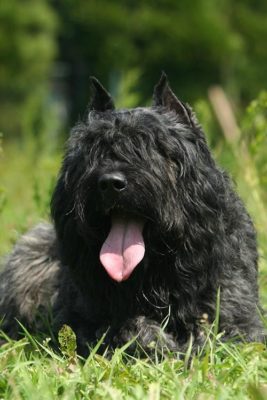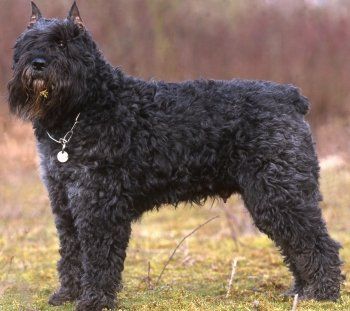Bouvier des Flandres
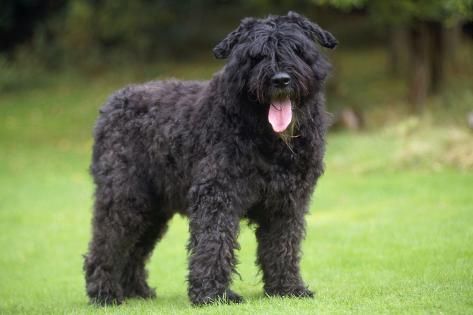
The Bouvier des Flandres is naturally accustomed to dominance and independence. He will perform tasks smoothly and does not need help. Quickly get accustomed to other animals and will share territory with them. They are not very energetic and can spend a lot of time in one place.
Table of Contents
Breed Information
| Another Name | Flanders Cattle Dog, Vlaamse Koehond |
| Origin | Belgium (Flanders), France |
| Height | Males 58-71 cm Females 56-69 cm |
| Weight | Males 36-54 kg Females 27-36 kg |
| Fur | Stiff, thick, medium length, tight-fitting, with a short undercoat |
| Color | Pale, tiger, black, gray, or white |
| Lifespan | 10-12 years |
| FCI Classification | Sheepdogs and Cattledogs (except Swiss Cattledogs) |
| Group | Service dogs |
| Price | $500-1000 |
Breed Photos
Origin History
The dog comes from Flanders, which now belongs to Belgium and France.
The name of the breed also translates to “cow shepherd,” which explains its primary purpose. In the beginning, the Bouvier des Flandres was used as a shepherd for livestock.
The breed was bred by monks who lived in the abbey and regularly brought dogs from England. So they crossed breeds and created the Bouvier des Flandres. For a long time, the dogs helped on the farm, guarded livestock, protected and even transported food in sleds.
The dogs first gained recognition in 1913 after Bouviers, Rex and Nellie, participated in a dog show.
The latest FCI standard was adopted in 1965, dogs have been actively used in countries around the world. Especially popular in the countries of Northern Europe, Spain, Ireland.
Appearance
The Bouvier Flanders is large, muscular, and healthy. The height differs depending on the sex. Males are 58-71 cm, and females are 56-69 cm. Males also weigh more than females. The weight of the males ranges from 36 to 54 kg, the females 27-36 kg. The hair of the dog is thick, medium length, there is also a short undercoat.
The color varies: the most popular is black with brown spots. But it also comes in gray, white, tiger, or pale. Superior light shades are undesirable.
The color of the eyes is very dark. The ears are usually cropped and are upright. The tail is also shortened, but many dogs are born without tails.
On the dog’s muzzle, a lot of hair, which forms the so-called “beard” and “whiskers”.
Character
The Bouvier des Flandres is naturally accustomed to dominance and independence. He will perform tasks smoothly and does not need help. Quickly get accustomed to other animals and will share territory with them.
They are not very energetic and can spend a lot of time in one place. But that does not mean that they are lazy and don’t want to do anything. On the contrary, the Bouvier des Flandres are always on the alert and try to keep an eye on everything that happens.
Dogs of this breed are very fond of children and will gladly spend time with them, play with them, and protect them.
Bouvier des Flandres are pretty stubborn and will never do anything they don’t want to do.
Care
The dog is ideal for keeping in the apartment, as it is not active at home and does not need constant movement. Only you need to provide it with frequent walks and preferably to run for long distances. If you keep the dog in a country house, it is not recommended to keep it on a leash or in an aviary. It is best that he can move freely in the yard.
The hair of dogs should be trimmed every three months and brushed regularly every day. Bathe once a year, but also watch your pet’s level of contamination.
Bouvier des Flandres doesn’t like to spend much time alone, so you need to make sure your dog doesn’t get bored. If a dog is alone for a long time, he will start barking loudly.
Training
To train a Bouvier des Flandres, you can seek help from professionals. The dog may be stubborn and reluctant to follow commands.
She also needs to run regularly and have exercise. It will help keep the pet in good shape.
You can take your dog for walks on a bike or horse and let him run beside you. But he will do it only if you are an authority figure for him.
Do not yell at the dog or raise your voice – he will take it aggressively and start barking a lot.
Common Diseases
Due to the bad weather conditions in Flanders’ mountains, the dogs have good stamina and resistance to disease. They have good health and a robust immune system.
Nutrition
It is enough to feed an adult pet once a day. You can give lean meat, cottage cheese, eggs, fish, different porridges. You can also provide food, but do not use it as a main dish.
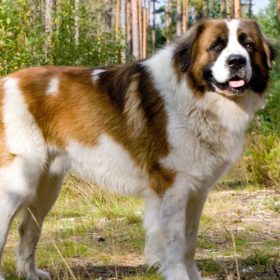 Moscow Watchdog
Moscow Watchdog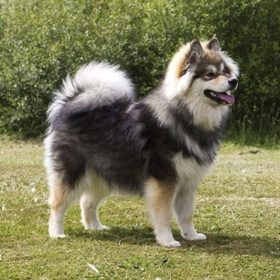 Finnish Lapphund
Finnish Lapphund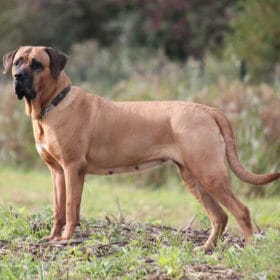 Tosa
Tosa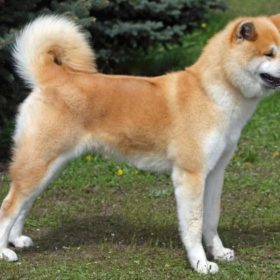 Akita
Akita Chortai
Chortai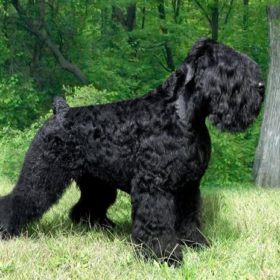 Black Russian Terrier
Black Russian Terrier
